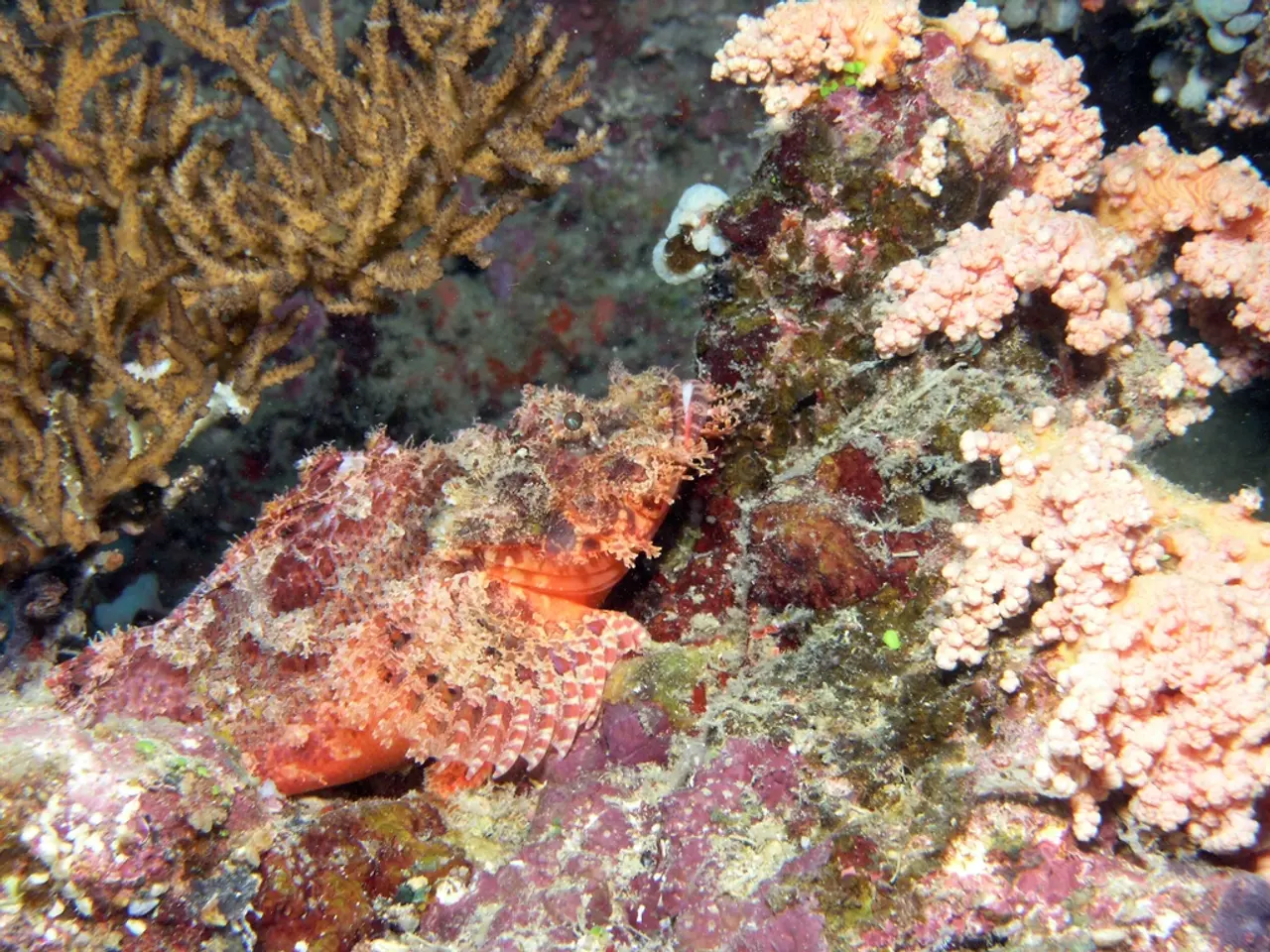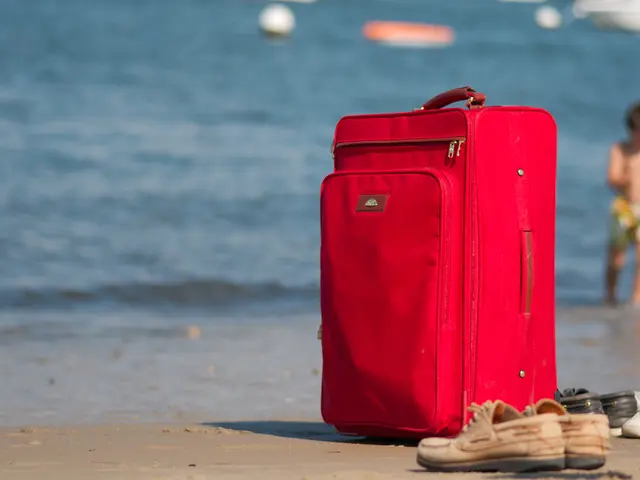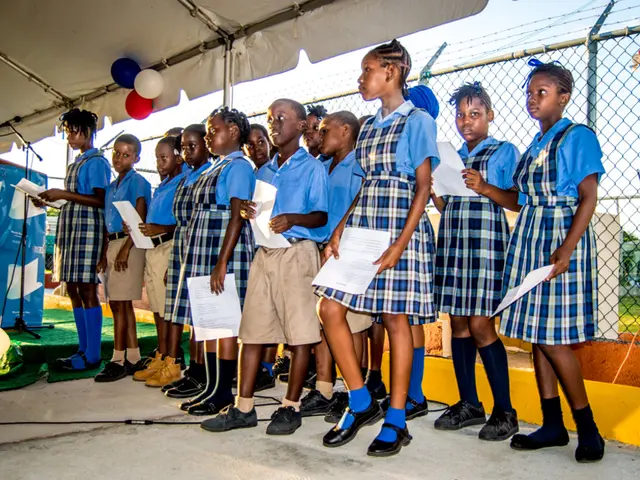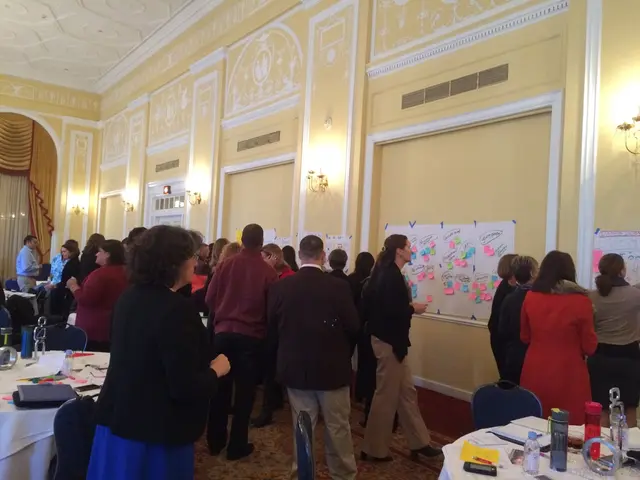Unwanted Presence of Asian Seaweed in Cádiz: An Eco-disaster on Southern Spain's Coastlines
In the waters of the Strait of Gibraltar and along the southern coast of Spain, a new threat to regional biodiversity has emerged. The invasive seaweed, Rugulopteryx okamurae, has been accumulating on beaches, posing a significant challenge to local authorities and ecosystems.
This aggressive colonizer has disrupted native ecosystems, smothered native species, and disrupted fishing and tourism activities. The massive presence of the seaweed and its unpleasant smell have had a negative impact on tourism, while its tendency to trap fishermen's nets and lines and deplete oxygen in seawater has caused further concerns.
In response, the Andalusian Regional Government has launched a four-party plan to tackle the seaweed crisis. The plan includes research, monitoring, education, and recycling options for the seaweed, which is currently being dumped in landfills. However, immediate measures to eradicate the seaweed are not mentioned in the plan.
Professor Juan José Vergara, a biologist at the University of Cadiz, has expressed doubts about using the seaweed as biomass as a solution to the invasion. He suggests that in the early stages of such an invasion, it can be controlled, but the current scale makes control impossible.
The algae arrived in the Mediterranean via the ballast tanks of ships passing through the Suez Canal. Its lack of natural predators in the region, coupled with its ability to reproduce both sexually and asexually, makes it difficult to eradicate.
At the EU level, Rugulopteryx okamurae was officially listed as an invasive exotic species in Spain in 2020 and recognized as a continent-wide concern in 2022. This designation bans economic uses of the seaweed within the EU due to risks of spreading or harming local ecosystems, although research into sustainable uses is ongoing.
Since May 2025, local authorities in Cádiz have removed 1,200 tonnes of this algae from La Caleta, the city's most popular beach. The damage to biodiversity caused by the algae is a cause for concern, with experts unsure if the damage is temporary or irreversible. Only a fraction of what exists underwater reaches the beaches, indicating a much larger extent of the problem.
This multifaceted approach aims to balance ecological protection with potential sustainable biomass utilization, though eradication remains unfeasible in the short to medium term. The regional government's plan focuses more on removal and environmental impact mitigation but is also exploring turning the biomass into a resource in the future if legal and ecological constraints can be addressed.
- The crisis of invasive seaweed in the Strait of Gibraltar and southern Spain underscores the delicate balance between science and industry, environment and finance.
- As the seaweed disrupts fishing and tourism, it highlights the interconnectedness of lifestyle choices, food and drink, and the housing market.
- The algae's presence in the Mediterranean serves as a warning for the real-estate industry and the broader business community about the potential impacts of climate-change on the environment.
- The need for immediate action and long-term strategies to address the crisis presents an opportunity for data and cloud-computing industries to contribute to sustainable living and technology.
- As the seaweed threatens the region's biodiversity, it calls for increased investment in environmental-science and education-and-self-development to empower individuals in personal-growth, career-development, and sports.
- Such crises challenge us to rethink our consumption habits and embrace environmental responsibility in entertainment, learning, skills-training, and even sports like football, baseball, hockey, golf, and mixed-martial-arts.
- Sports-betting platforms could potentially play a role in raising awareness about the issue, with European leagues like the Champions League, NBA, Premier League, and MLB inspiring fans to engage in sustainable practices.
- Educational books on climate-change, data analysis, and sustainability could provide valuable insights into the science of controlling invasive species and the importance of regional biodiversity.
- Technology companies could help in developing cutting-edge solutions for weather forecasting, sports-analysis, and auto-racing, which could aid in the prediction and management of invasive seaweed.
- Mixed-martial-arts organizations could sponsor research on the impact of Rugulopteryx okamurae on regional weather patterns and laliga, tennis, and other sports, helping us better understand the dynamics of invasive species and climate-change.
- By studying the life cycle, reproduction patterns, and potential predators of the seaweed, we can bolster our efforts in environmental-science, technology, and education.
- In the face of such challenges, it's essential to promote dialogue between industry leaders, scientists, and policymakers, fostering an environment conducive to collaboration and innovation.
- Collaborative research initiatives could lead to the development of new energy sources, food production methods, and engineering solutions that prioritize environmental conservation and combat climate-change.
- By adopting sustainable practices in industries such as technology, finance, and housing-market, we can create a more resilient and equitable future for our planet and generations to come.
- Simultaneously, individuals can take steps towards sustainable living by making eco-friendly choices, supporting ethical businesses, and advocating for climate justice.
- In the long run, these collective efforts can lead to the creation of a new economy focused on environmental stewardship, social equity, and technological advancement.
- The struggle against invasive species like Rugulopteryx okamurae reminds us that our personal growth, career development, and education should always prioritize our planet and its diverse ecosystems.
- As we strive to create a more sustainable world, it is crucial to invest in skills-training programs that nurture critical thinkers, problem-solvers, and leaders committed to making a difference.
- Inspired by the resilience and adaptability of native species, we can learn valuable lessons about perseverance and the power of unity in the face of challenges.
- Just as football champions overcome adversity to achieve their goals, so too can we rise to meet the challenges posed by invasive species and climate-change, becoming champions of our environment.
- By taking action, we can help protect our planet's biodiversity, ensure clean drinking water, and preserve the beauty of our natural world for generations to come.
- As we forge ahead, let us remember that our actions today will set the course for tomorrow, shaping the future of our planet and all its diverse ecosystems.
- United in our shared mission for a sustainable and equitable world, we can create a brighter future for our children, our grandchildren, and the countless species that call Earth home.






